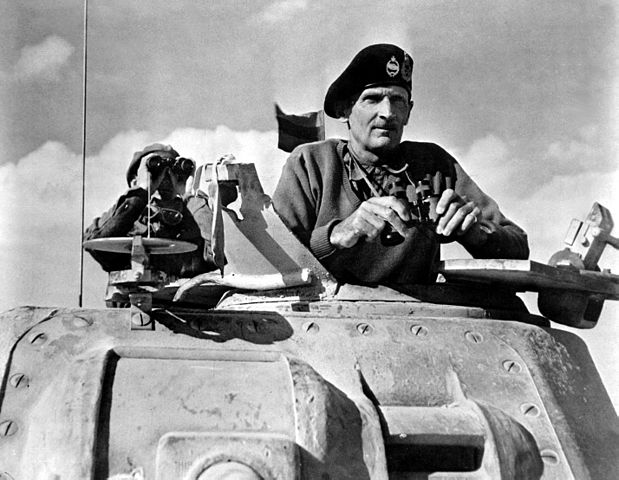
The sands of North Africa yielded the first great Allied victory of the Second World War. But not before almost three years of bitter struggle in which both sides had to contend with the particular challenges of maintaining an army in the inhospitable conditions of the desert.
Here are 10 key events of the North African campaign.
 Listen Now
Listen Now1. Italian invasion of Egypt
Italian forces moved into the Western Desert from the Italian colony of Cyrenacia (a region of modern-day Libya) in September 1940. They possessed massive numerical superiority over the small British force in Egypt charged with defending the Suez Canal.
Having advanced some 50 miles into Egypt, the Italians established a line of bases at Sidi Barrani.
2. Defeat of the Italian forces
Though outnumbered, the British were superior to the Italians in every other respect. The Italians at Sidi Barrani were soon outflanked and enveloped.
Bardia and Tobruk were taken soon after in similar fashion, with the Australians taking responsibility for the latter. With the surrender of Benghazi, the near total collapse of the Italian forces in North Africa was complete.
 Watch Now
Watch Now3. Arrival of Erwin Rommel
In February 1941, Erwin Rommel was sent to rescue the floundering Italians. His arrival turned the North African campaign on its head. Against orders, Rommel advanced along the coast toward Benghazi.
The British, caught by surprise, fell back. Stretching his supply lines to the maximum, Rommel continued his advance until the British had been pushed out of Libya, with the exception of Tobruk.
4. The Siege of Tobruk
For 241 days, the garrison at Tobruk held firm against constant German assaults.
Between April and August the garrison was made up primarily of men from the 9th Australian Division. In August they were relieved by the British 70th Division and the extraordinary Polish Carpathian Rifle Brigade, who would earn themselves a fearsome reputation.
In December 1941, Tobruk was successfully relieved during Operation Crusader. Having overrun his fuel supplies, Rommel fell back.
 Watch Now
Watch Now5. Tobruk falls
In January 1942, having regrouped following the disappointment of the previous year, Rommel launched a fresh attack into Cyrenacia. As Allied forces fell back, Tobruk again became isolated. The port’s defences were not a strong as they had been the previous year. After a siege lasting less than a week, Tobruk fell. It was one of the worst Allied defeats of the war.
More than 30,000 Allied soldiers were taken prisoner and Rommel also took possession of the stockpiles of fuel, ammunition and vehicles. With momentum on his side, Rommel pressed on, pushing the Allies back into Egypt.
6. First Battle of El Alamein
With his sights set on Cairo, Rommel once again pushed his supplies to the limit by attacking the new Allied line at El Alamein in July 1942. But his forces were exhausted.
The Allies also felt the benefit of their new Grant tanks, which gave them the edge over the German armour. After four days, Rommel halted the attacks. His drive into Egypt was at an end.

The Allies enjoyed massive material supremacy over the Axis forces at El Alamein. But it was Montgomery’s tactics that enabled them to be used to the maximum advantage.
7. Arrival of Montgomery
Bernard Montgomery was appointed commander of the Eighth Army in August 1942. The appointment bolstered morale and coincided with a fresh influx of supplies into North Africa, including heavier anti-tank guns, Grants and new Sherman M4 tanks.
8. Second Battle of El Alamein
At the Second Battle of El Alamein, in October 1942, Montgomery’s forces enjoyed vast material superiority. The Allies also possessed total air supremacy over the battle area.
Combined with Montgomery’s improved tactics, which saw anti-tank guns working in unison with artillery and tanks, the Allies inflicted a devastating defeat on Rommel and proceeded to pursue him out of Egypt and all the way across Libya into Tunisia.
9. Operation Torch
In November 1942, an Anglo-American invasion force landed in French North Africa under the command of General Dwight D. Eisenhower.
Having secured the surrender of the Vichy French government, Eisenhower’s forces advanced into Tunisia with the intention of securing Tunis. They were halted by German and Italian troops at the Battle of the Kasserine Pass, which exposed the American forces’ lack of experience.
10. Axis surrender
Eisenhower’s force linked up with the British Eighth Army and launched a combined offensive against the German and Italian lines around Tunis. On 13 May 1943, the Axis forces surrendered. More than 200,000 soldiers were taken prisoner. The North African campaign was over.














